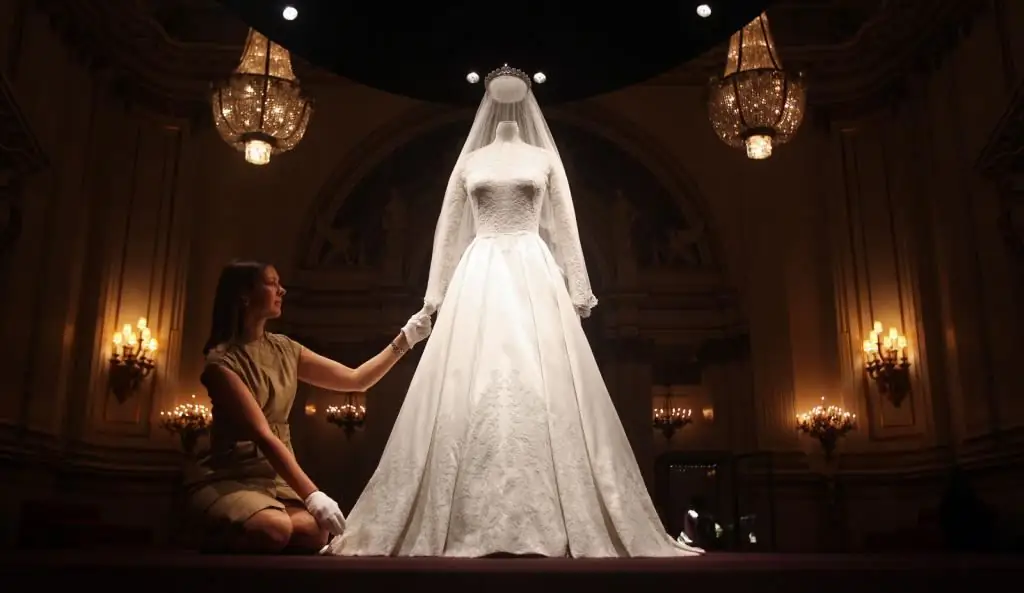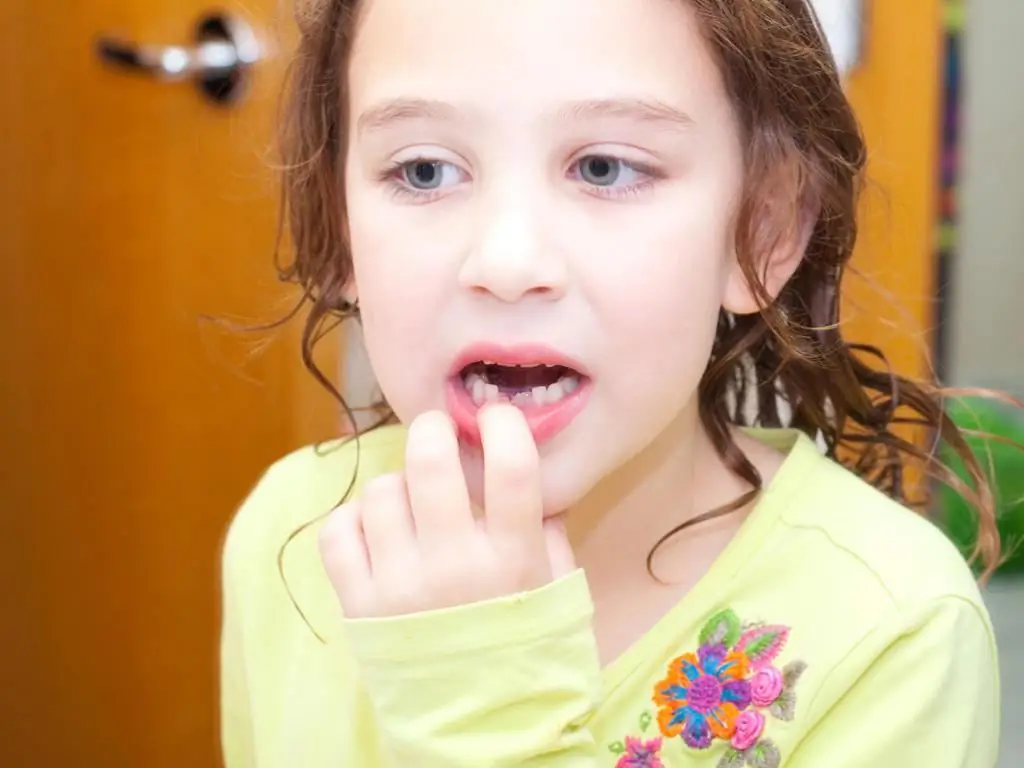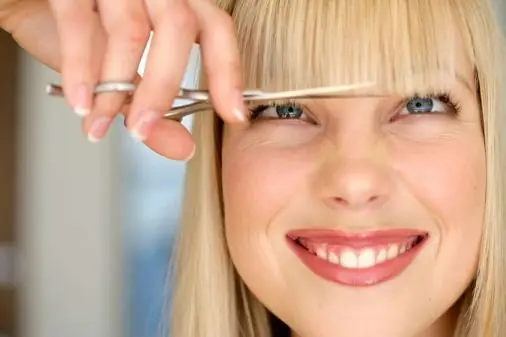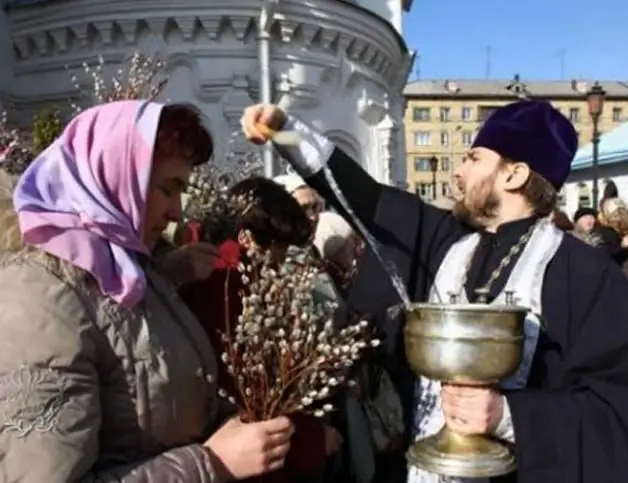2025 Author: Priscilla Miln | [email protected]. Last modified: 2025-01-22 17:55:24
Despite the widespread use of digital technologies, in the modern world there is still room for folk signs, customs, superstitions. A special place among them is occupied by stories related to the milk teeth of children. For example, on the appearance of the first incisor among many peoples, it was customary to give a child a silver spoon and be sure to knock it on the erupted tooth. This meant that the baby was already ready to get acquainted with adult food. Moreover, it was necessary to feed him with this particular silver spoon. A lot of signs are connected with their loss.
About what to do with milk teeth and whether they can be stored, we will tell in our article. We will definitely dwell on interesting signs and traditions of the peoples of the world, which have survived to this day.
When does baby teeth change?

The moment when the baby begins toloosening, as a rule, the lower incisors, can be safely called one of the most exciting in the life of both children and their parents. Usually the first tooth falls out in a child at the age of 6-7 years. This time for most children coincides with the beginning of school life. Hence the first sign was formed: the first tooth fell out - it means it's time to go to school.
Don't worry too much if the change of dairy units to permanent ones does not occur within the generally accepted time frame. They may vary depending on the individual characteristics of the child, the development of his jaw, the state of the organs of the oral cavity. In this regard, in some children, teeth begin to fall out at the age of five, while in others after seven.
Most often, the loss of milk units is preceded by the growth of "sixes". First, the lower incisors begin to loosen, then the upper ones. That is, their change occurs in the same sequence as growth. So parents have plenty of time to figure out what to do with milk teeth.
Actions of parents when changing milk incisors
Dentists assure that a baby whose first teeth are loosened does not need anesthesia for this process. Although some parents think otherwise. In fact, before the tooth begins to loosen, its roots resolve. But discomfort and pain can be caused by a wound formed at the site of a fallen tooth unit.
Parents of a child who has just lost his first tooth can help him in the following ways:
- Explain that the process of falling out is the next stage of growing up. Now the child has become quite large andcan be proud of it.
- Take care of your oral hygiene by rinsing your mouth with baking soda.
- Warn the child that the wound formed at the site of the fallen tooth should not be touched, so as not to infect.
- After eating, offer to rinse the mouth with warm water. Do this until the wound heals.
Do I need to see a doctor?

Ideally, when changing milk teeth, they fall out on their own, that is, no extraction is required. But in 80% of cases, things turn out a little differently. A permanent tooth begins to climb after the milk one, when it has not yet fallen out. And since there is an obstacle in his path, he changes his direction in the wrong direction. Subsequently, this leads to the formation of a malocclusion in the baby.
To help the milk tooth leave its place faster and release it to the root, you need to see a doctor. Only a competent specialist can surgically remove a unit of the dentition correctly. If you try to do it yourself at home, you can damage the gum mucosa and provoke the development of an inflammatory process. You may also need the help of a dentist in the following atypical situations:
- with swelling and severe pain in the gums;
- with bleeding and long wound healing;
- when a tooth is broken or severely damaged;
- in case of swallowing a unit of the row.
As soon as the baby begins to loosen the tooth, it is more oftenjust in high spirits. Very soon, the child will be able to show off to his friends what an adult he has become. At the same moment, parents are overcome by another problem, namely, where to put milk teeth. Think about it in advance.
Where to put the lost baby tooth?

As you know, in most children, the lower milk incisors are the first to leave the dentition. And even if this event did not happen at home, but in a dental clinic, the doctor is obliged to give the baby his tooth. And already at home, mom and dad will decide for themselves what to do with the child's baby teeth that have fallen out. But most parents are hesitant to throw it in the trash.
Many mothers carefully store items that remind them of the first years of their baby's life. These include an ultrasound scan taken during pregnancy, and a tag from the hospital, and the first curl cut at 1 year. It is along with these things that most mothers prefer to keep the first fallen tooth.
If parents are superstitious enough, they can conduct a real farewell ritual with the milk element with the child, which he will remember for a lifetime and be able to pass this tradition on to his children. To do this, you should first get acquainted with the signs of different peoples of the world.
Can baby teeth be stored?
Until recently, it was believed that the elements of the dentition that fell out on their own or surgically removed should be disposed of immediately. Black magicians, witches and sorcerers could steal them from the house and conspire or damage them. Therefore, parents did not stand on ceremony with what to do with milk teeth. They were thrown away or buried deep in the ground.
Today, the opinion on how to dispose of lost milk teeth has changed dramatically. The fact is that British scientists have learned how to extract stem cells from the pulp. It has been proven that their potential is much stronger than the biomaterial taken from the umbilical cord of a newborn. To learn more about this, parents can contact the stem cell bank. Storage of biomaterial in this medical facility is carried out at a temperature of -196 °C. Frozen cells can later be used in the treatment of serious diseases, including bone marrow transplantation.
What to do with baby's milk teeth: folk signs

Each nation from time immemorial had its own traditions and customs regarding the storage of fallen units of the child's dentition. For example, nomadic tribes always buried them. Therefore, there were no questions about where to put the child's milk teeth. Parents had to dig a deep hole, put a tooth in it and cover it with earth. It was believed that this was the only way to protect the baby from damage and misfortune.
The peoples of Britain had their own traditions regarding what to do with a child's milk teeth. Folk customs boiled down to preventing damage to a child with a tooth. For this purpose, any milk element of the series was burned immediately after falling out. It was believed that in this case, strong and he althy quickly grew in its place.
One morea sign common among the English in antiquity is associated with animals. It was believed that the tooth should be destroyed, hidden or buried so that a predator would not get it and eat it. If this happens, then the child will grow fangs, like an animal.
Today all these signs seem strange and funny, but our ancestors sincerely believed in them and, worrying about the fate of their children, unquestioningly carried out all these actions.
Why give a tooth to a mouse?

Among the Slavic peoples, one of the signs of where to put a milk tooth was associated with throwing a fallen unit behind the stove. This was done for a brownie or for a mouse. They should have taken the baby tooth and brought in a permanent one instead.
In some European countries, it is also customary to put a tooth under the pillow at night. But it’s not the kind tooth fairy with wings and a magic wand in her hands that should pick it up, but a little mouse. In France, her name is La Petite Souris, and in Spain, Perez. Traditionally, at night, an inconspicuous little mouse sneaks under the pillow to exchange the tooth for money or treats. Children are looking forward to the appearance of this rodent to receive something nice as a gift.
Who is the tooth fairy?

In many countries of Northern Europe, America and Canada, there is a different sign about a child's baby teeth. Where to put the dropped element of the row, they know here almost from birth. Toddlers are looking forward to when their tooth begins to loosen, so that after it falls out, put it underpillow. Instead, the good fairy should bring a coin there. This tradition is by far one of the most common and popular. By the way, the tale of the tooth fairy and the mouse Perez was invented by the Spanish writer Luis Coloma for the eight-year-old King Alfonso VIII, who lost his first milk tooth.
The myth of the good sorceress is useful. It helps the child to overcome the fear of a lost tooth and gives money or other pleasant compensation for the loss.
Do you need a gift?
Regardless of where the mother decided to put the baby's milk teeth, where to put them or throw them away, it will be very good if she prepares some surprise for the crumbs. This will make it easier for him to bear the loss.
If a child puts a tooth under the pillow, the first thing he will do when he wakes up is check whether the mouse or the tooth fairy has taken his treasure. If yes, then a coin or present should appear in this place. It can be a book, a coloring book, a set of pencils, paints or felt-tip pens. Parents should choose gifts that can easily fit under the pillow. If the present is too big, then it will have to be placed nearby.
It is not recommended to give chocolate, sweets and other sweets. The Tooth Fairy cares about the he alth of children's teeth, so she should give them only useful gifts. And as you know, from sweet teeth very quickly begin to deteriorate. It is better to put a coin under the pillow, and for it the child will buy what he likes.
Traditions of Asian peoples

In many countries of the Middle East, children do not leave their lost tooth to a mouse or a fairy. Instead, they toss it up into the sun. It is believed that this will allow the teeth to grow faster and stronger than before.
A similar sign of what to do with a fallen milk tooth is also observed in Japan. To get a new one to replace the old one, you need to make a good straight throw. That's just the bottom tooth should be thrown up, and the top - down, that is, in the opposite direction.
Tooth on the roof
Tossing dropped milk elements is a fairly common sign among many peoples. But children in some countries aspire to throw a tooth on the roof. This is how they do it in Greece, Brazil, Ethiopia, Sri Lanka. But in China, Korea, Vietnam and India, they do this only with the lower teeth, while the upper ones, on the contrary, are thrown under the bed or even hidden in the cracks in the floor. And every kid knows what to do with baby milk teeth.
Throwing teeth on the roof is necessary in order for a bird or squirrel to grab it faster. Then a new one will grow in its place very quickly. And the tooth under the bed, most likely, can easily be dragged away by a mouse.
Maybe the tooth needs to be hidden?
Not everyone wants to give their dropped treasures to an animal or some fabulous creature. In Nepal, it is considered very bad luck for a bird to take a tooth and do something with it. In this country, children come up with their own secret storage places that even adults do not know about.
In Malaysia, lost milk teeth are also hidden, but only inearth. Toddlers bury them, thus returning them back to nature.
In Turkey, parents believe that with the help of baby teeth they can influence the child's choice of future profession. So, they bury the dropped elements near the hospital if they want their child to be a doctor, or near the school if they dream of seeing him as a teacher. Football fields are especially popular.
Recommended:
In what month is it better to get married: folk signs and superstitions

When planning a wedding, even the most skeptical newlyweds are interested in what month is the best time to get married? In this case, not only weather and practical considerations play a role, but also signs. Let's look at which month is better to get married and get married
Wedding omens and superstitions. Signs for the bride and groom

Wedding signs are not just a set of superstitions. The origin of each of them has a simple and quite worldly explanation. Each of the signs has a meaning. Superstitions should not be neglected, even if they are not taken seriously, it is also not necessary to avoid traditional rituals - circling around the city, a wedding loaf and others
Change of milk teeth in a child: terms, age limits, procedure for changing teeth, features of the process and advice from parents and doctors

As a rule, children's teeth fall out at a certain age. However, sometimes they are replaced earlier or later than the due date. Let's see what it could be. It is also worth studying the useful recommendations of experts
Is it possible to cut bangs during pregnancy: hair care. Are folk signs valid, is it worth trusting superstitions, the opinion of gynecologists and pregnant women

Pregnancy brings a woman not only a lot of joy from waiting to meet her child, but also a huge number of prohibitions. Some of them remain superstitions all their lives, while the harm of others is proved by scientists, and they pass into the category of unrecommended actions. Hair cutting belongs to a group of superstitions that should not be blindly trusted. Therefore, many expectant mothers are concerned about the question of whether it is possible to cut bangs during pregnancy
Palm Sunday: signs and superstitions. Traditions and customs of the holiday

Among the many church holidays there is one, if not the most important, but especially revered - the Entry of the Lord into Jerusalem. Among the Slavic peoples, it was called Palm Sunday

